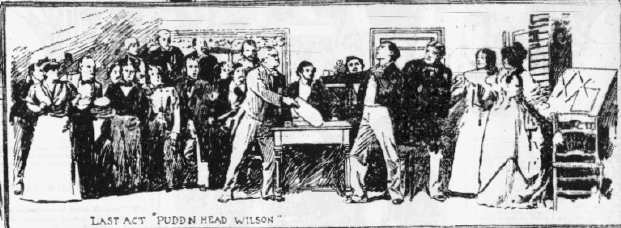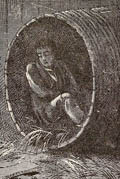
Original Broadway Production
The critic who reviewed the play for the Tuesday, April 16th, Times was friendly but not very impressed. This review does provide the best summary of the drama I've found:
The reviewer from The New York Tribune emphasized Mayo's performance in the title role. The review ends with a reference to the interest MT showed in the play's reception in New York:
At the end of the play's first week in New York, the Sunday Times printed a second review of it -- probably the work of a different critic. Of the reviews I've seen, this is the one that puts the most emphasis on race; it reads Chambers and Tom as determined by their respective Caucasian and Ethopian "natures":
The Sunday New York Herald reviewed the play under an illustration of its last act. It called the play an "unquestioned success." It ends by referring to "the evils of slavery," but focuses chiefly on Mayo's work as both dramatist and actor:
In its brief note on the play, the humor magazine Life kept its focus on the "lovable" character of "Pudd'nhead" himself, and Frank Mayo's work in bringing him to life:
The play ended its first New York run in the middle of June; in July Beaumont Fletcher, the drama critic for Godey's Magazine (which was also nearing the end of its run as one of 19th century America's most popular periodicals), wrote a long appreciative essay on Mayo's dramatization. He is more interested in what the play reveals about the superiority of drama to fiction, but includes both a surprisingly frank acknowledgment of how the customs of slavery exposed the hypocrisy of the idea that America had always been "the land of the free" and an unexamined assertion that Tom's viciousness was proof of the "negro-taint" carried by his blood. The essay is illustrated with seven photos of the original cast in their characters and costumes:
